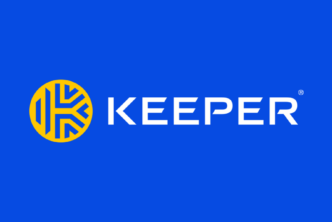Table of Contents
Fostering trust through communication between remote teams
Trust is essential, especially when working in and managing remote teams. Why? Because when team members are spread around the world, the risk of trust breaking down is much greater.One of the most effective ways to counter those risks is through finding and hiring the right talent. Don’t recruit those who struggle to manage their own workloads.
Your company needs self-starters, disciplined team members, contractors or freelancers, skilled at managing workloads regardless of where other members of the team are located.
After going through the recruitment process, you need to support these team members well. What that means is building trust and maintaining it. That can only come as a result of open, shared and honest communication.
Communication challenges in remote teams
When everyone is working in the same office, people meeting “around the water cooler” — spontaneously — doesn’t need to be arranged. It happens naturally.
People decide to go out for lunch together. Stop and chat in the kitchen when they’re making coffee. Go for a brief walk.
Now, although none of that sounds like “work”, some of the world’s most successful and innovative companies, including Accenture, have designed whole offices to increase the chances of spontaneous meetings.
Why are “water cooler conversations” so important?
Spontaneous and unexpected conversations, although not always about work, establish and improve trust amongst team members.
Not only that, but the reason innovative companies want these sorts of conversations to increase is they multiply the opportunities for innovation, new ideas, and creating solutions to difficult challenges.
When it comes to distributed, remote, and virtual teams, there are barriers preventing these same spontaneous conversations and chats.
You can’t just grab a coffee when a co-worker is hundreds of miles away, or in another country or timezone. Remote team members are more isolated.
Often working alone for some or all of the day. It takes longer to establish trust and build relationships with other team members and managers. Asynchronous communication isn’t as easy, as a result of time zone differences and when people are online and working.
How to overcome these remote team communication challenges?
Although we recognize and understand the challenges when it comes to establishing and maintaining open, shared and honest communication in remote teams, there are numerous advantages for those working in those teams.
Particularly amongst developers, many spend more time online than those in traditional industries, for example.
It is not uncommon for developers to have numerous online friendships, relationships, and connections. So it is not such a huge leap for a developer or engineer to adapt to an online/virtual working environment. Providing those managing this team are supportive and encourage open and honest communications.
Here are 7 ways you can manage a remote team and encourage positive communication between team members and leads.
Tips for building positive, open, and honest communication in remote teams
#1: Virtual coffees
Unprompted conversations that establish and encourage strong teamwork happens more naturally when everyone is in the same office.
Don’t restrict that when everyone is in a remote team. Grow a positive company culture by encouraging team members to down tools, make a coffee and have a chat about whatever they want.
It won’t negatively impact productivity; if anything, it will keep remote workers happy and it will encourage and improve trust between team members.
#2: Team retreats
Some well-known companies with remote teams, such as Buffer, run team retreats.
For the most part, these involve getting the whole team together in the same location to work and have fun. Or it means getting one of the teams together, such as engineering or customer success.
Another way to do this is to get everyone together remotely for a chat, coffee, and a few beers. Even spend some downtime playing a virtual game together.
Anything you can do to improve and build on the trust and relationships between team members should be encouraged.
#3: Video conferences
Yet another and one of the most common methods of getting everyone together and on the same page involves video conferencing.
Make sure everyone is online at the same time. It is also worth making sure that everyone is provided with, or already has, a strong internet connection, high-quality camera, and audio equipment and is working somewhere whereby they won’t be disturbed — such as a noisy coffee shop.
Not being disturbed is not only important to remember for the smooth running of the call, but if you’re discussing confidential client information, there is a risk that one of the team is breaking data protection laws. You never know who might be listening!
Virtual meetings don’t always go well. Sometimes they can be time wastes for teams that have a lot to do.
So always set an agenda. Lay down and establish an etiquette. Make sure everyone who’s on the call lets others know when they’ve logged in.
Use a platform/tool that is reliable and can cope with team members in different time zones and internet connections. In some cases, your remote teammates may be using different devices (laptop vs. smartphones). So make sure you take that into account as a manager.
#4: Accessible hours
As a manager, your team should know when you’re accessible.
It is equally useful if everyone knows the hours everyone else is working, so that clear windows of people working at the same time — creating times for coffees and video calls — can be easily established.
Open and honest communication starts with having clear schedules for when people are online, when they’re “deep working” on projects and problems and other times when they’re available for calls and spontaneous chats.
#5: Socialize your schedule
It is equally useful for your team to know when you aren’t available. The last thing you want, as a manager, is to jump on an important client call, or need to nip out and run errands, only for one of the team to need you urgently to solve a problem.
Publish your schedule, using an “office hours” approach, clearly showing when you are and are not available for calls, spontaneous chats and video conferences. At the same time, it is easier to establish and maintain trust when you respect the time of other team members in the same way.
A degree of flexibility — and therefore trust — goes a long way towards building stronger bonds between team members and managers.
If they need to make up the time to complete a task or big project later in the day, later that week, or even that weekend, trust them as responsible professionals who manage their own time to complete what they’ve started.
#6: Collaborative tools
We live in a world awash with collaborative communication tools.
Keeping your team working on the same page shouldn’t be a challenge. When working on the same project, make sure everyone is using the same few tools, e.g. Slack, Basecamp, Google Hangouts, and Skype. Put systems and processes in place.
However, don’t assume that your team will stick to these tools. They may want to communicate via other “non-work” channels, such as Twitter, Facebook, Instagram, LinkedIn or Telegram.
That shouldn’t be a problem, and in many ways, it should strengthen the trust and communication between team members when working.
As a manager, make sure anything that influences the outcome of the project is recorded via one of the project tools and channels, that way there isn’t any secret meetings or groups that could negatively impact the work the team is doing together.
#7: Shared project vision
Depending on the work being done, you may have several teams working in silos on different aspects of a project.
This method often proves most effective, since this way one team isn’t waiting on another to get something done. Integration is easy using APIs and occasional asynchronous working.
However, unless the team knows the purpose of the project, with a shared vision, it can be difficult to achieve something together. Getting everyone on the same page requires effort, focus and honesty on the desired outcomes from the start.
Final advice from remote communication leaders
Buffer, with a remote team of over 85 around the world, is one of the leading examples of how to manage remote workers successfully. CEO Joel Gascoigne says that, “transparency breeds trust, and trust is the foundation of great teamwork.” 1.
Credit Karma takes a similar approach.
CEO Kenneth Lin, who operates an open door policy, says that, “I want new employees to feel like this is a mission we’re all in together. An open-door policy sets the tone for this. Whenever I’m in my office and available, I encourage anyone to come by and share their thoughts about how they feel Credit Karma is doing.”
You can do this remotely, using the office hours approach we talked about earlier.
Even the world’s largest hedge fund — based on assets under management — Bridgewater Associates, takes the “radical transparency” approach to communications, thereby strengthening the team and improving outcomes.
Founder and CEO Ray Dalio says, “My most important principle is that getting at the truth, whatever it may be, is essential for getting better. We get at truth through radical transparency and putting aside our ego barriers in order to explore our mistakes and personal weaknesses so that we can improve.”
Key takeaways
For anyone wanting to put this into practice within their remote team, here are a few things to remember:
- Encourage virtual coffees and times when people can just chat and take a break
- Set up team retreats (virtual or in-person)
- Create rules and etiquette for video calls
- Use the most effective collaborative tools
- Socialize your schedule and encourage everyone to publish when they’re accessible
- Have a shared project vision and encourage honesty.
Are you already working with a remote team or still considering it as an option? Contact our support team today to explore the full benefits of cooperating with dedicated tech talent teams.







